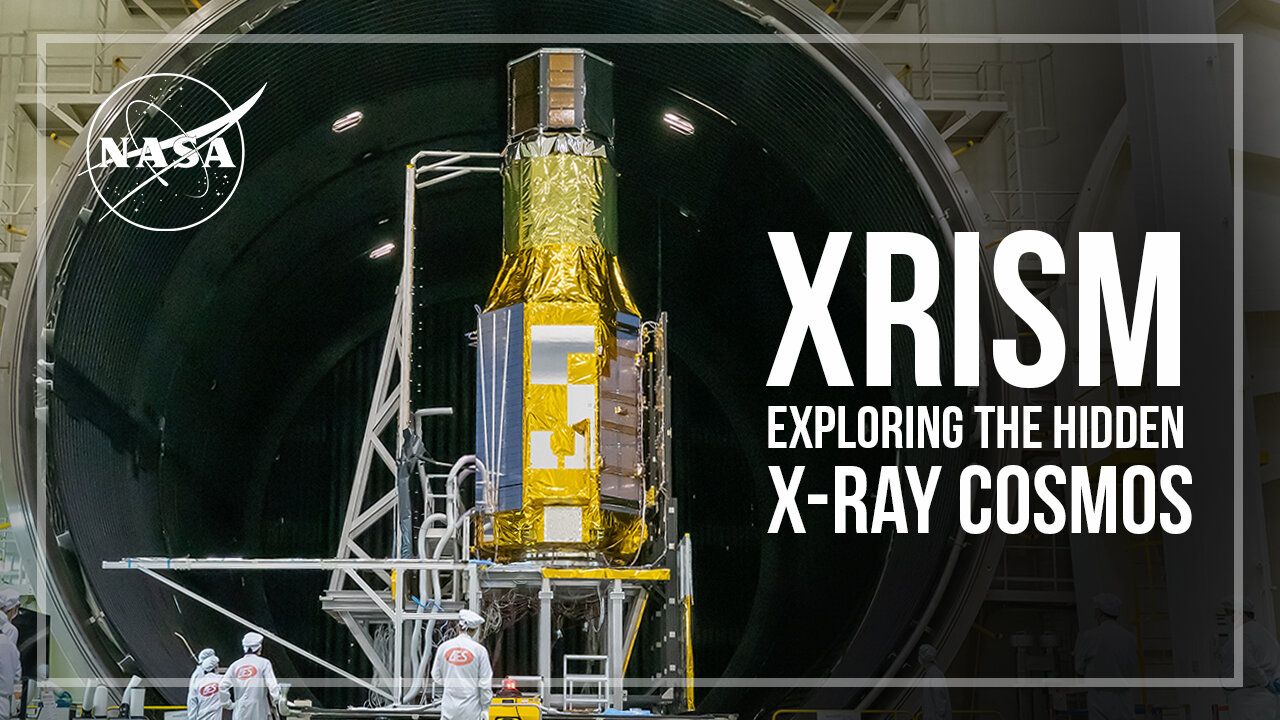Premium Only Content

XRISM: Exploring the Hidden X-ray Cosmos
A powerful satellite called XRISM (X-ray Imaging and Spectroscopy Mission) is set to provide astronomers with a revolutionary look at the X-ray sky.
XRISM is led by JAXA (Japan Aerospace Exploration Agency) in collaboration with NASA and with contributions from ESA (European Space Agency).
XRISM detects X-rays with energies ranging from 400 to 12,000 electron volts. (For comparison, the energy of visible light is 2 to 3 electron volts.)
This range will provide astrophysicists with new information about some of the universe’s hottest regions, largest structures, and objects with the strongest gravity.
The mission has two instruments, Resolve and Xtend.
Resolve is a microcalorimeter spectrometer developed in collaboration between JAXA and NASA. When an X-ray hits Resolve’s 6-by-6-pixel detector, its energy causes a tiny increase in temperature. By measuring each individual X-ray’s energy, the instrument provides information about the source, such as its composition, motion, and physical state.
To detect these tiny temperature changes, Resolve must operate at just a fraction of a degree above absolute zero. It reaches this state in orbit after a multistage mechanical cooling process inside a refrigerator-sized container of liquid helium.
XRISM’s second instrument, Xtend, was developed by JAXA. It will give XRISM one of the largest fields of view of any X-ray imaging satellite flown to date, observing an area about 60% larger than the average apparent size of the full moon. The images it collects will complement the data collected by Resolve.
Each instrument is at the focus of an XMA (X-ray Mirror Assembly) designed and developed at Goddard.
X-ray wavelengths are so short, they can pass straight between the atoms of the dish-shaped mirrors used to capture visible, infrared, and ultraviolet light.
Instead, X-ray astronomers use nested curved mirrors turned on their sides. The X-rays skip off the surfaces like stones across a pond and into the detectors.
Each of XRISM’s XMAs houses hundreds of concentric, precisely shaped aluminum shells built in quadrants and assembled into a circle. In all, there are over 3,200 individual mirror segments in the two mirror assemblies.
After launch, XRISM will begin a months-long calibration phase, during which Resolve will reach its operating temperature.
-
 17:11
17:11
MetatronHistory
1 day agoMedieval Christianity in the Historical Context of Power
14.2K4 -
 4:25
4:25
Paul Joseph Watson
1 day agoHe Let Slip More Than Intended
13.6K35 -
 1:34:32
1:34:32
MattMorseTV
1 day ago $30.31 earned🔴Trump's MASSIVE UPDATE.🔴
69.5K94 -
 2:16:21
2:16:21
Side Scrollers Podcast
18 hours agoTwitch has a SERIOUS Problem + Leaflit’s VIRAL Interview + More | Side Scrollers
47K13 -
 21:55
21:55
GritsGG
14 hours agoMega Win Streak On Warzone! Over 4100 Wins on BO6 WZ!
9.33K1 -
 20:22
20:22
The Pascal Show
1 day ago $3.00 earnedARE THEY IGNORING HER?! Is The White House & FBI Ignoring Candace Owens' A**assination Claims?!
29.2K16 -
 1:00:45
1:00:45
TruthStream with Joe and Scott
1 day agoMondays with Matt Geiger from Verity Metals: Gold, Silver, The Housing Market and more. Live 12/1 6pm pacific #519
9.6K1 -
 2:17:46
2:17:46
The Connect: With Johnny Mitchell
3 days ago $14.79 earnedA Sitdown With The Real Walter White: How An Honest Citizen Became A Synthetic Drug Kingpin
81K2 -
 2:40:08
2:40:08
PandaSub2000
11 hours agoDEATH BET | Solo Episode 01 (Edited Replay)
6.54K1 -
 LIVE
LIVE
Lofi Girl
3 years agolofi hip hop radio 📚 - beats to relax/study to
540 watching